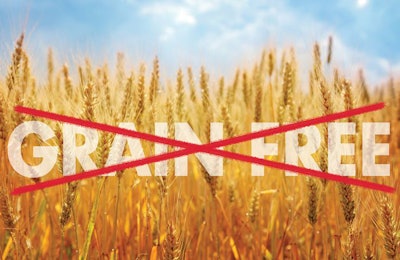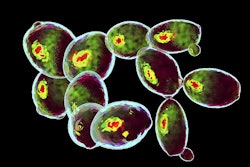
The U.S. Food and Drug Administration’s (FDA) 18-month (and counting) investigation into canine dilated cardiomyopathy (DCM) and grain-free pet food – and particularly FDA’s announcements about the investigation – have put a damper on sales of that category, according to data released by Nielsen in October 2019. And that, combined with a move toward other categories like “grain-friendly” products, has in turn started impacting ingredient suppliers and others in the industry with significant portions of their businesses devoted to grain free.
But do we know if, and how, the ongoing DCM investigation has affected the overall U.S. pet food market? New analysis of 2018 consumer spending data may provide some answers.
Pet food spending dropped after initial FDA DCM alert
John Gibbons, longtime pet industry expert and creator of the PetBusinessProfessor.com website and blog, regularly receives detailed data on the industry from the U.S. Bureau of Labor Statistics (BLS) Consumer Expenditure Survey, then breaks it down to analyze spending in various segments. For example, his analysis in fall 2019 of 2018 BLS data showed overall spending on pet food declined 7.3% that year, ending up at US$28.85 billion, down from US$31.1 billion in 2017.
(Notes: BLS consumer spending data doesn’t always match up with sales or spending data from other sources; the American Pet Products Association’s annual spending report, released in March 2019, pegged 2018 pet food spending at US$30.32 billion. In addition, BLS, like many other government agencies, takes its time releasing data updates – thus the final 2018 numbers didn’t come out until late summer 2019.)
New analysis from Gibbons makes this point: The pet food spending drop in 2018 happened in the second half of the year – after FDA’s initial announcement about its DCM and grain-free pet food investigation. During the first half of that year, pet food spending increased by US$0.25 billion. “Then the bottom dropped out as spending fell US$2.51 billion in the second half,” he wrote. “The timing of this spending drop, in correlation with the FDA warning on grain free, is too close to be a coincidence.”
Further, this decline broke a spending pattern Gibbons detected that began in 1997 and continued through 2017, in which pet food spending increased for two years, then decreased or saw flat growth for a year before rising again for two years – and so on.
This pattern seemed to be driven (and sometimes intensified) by market trends or events like the melamine-related recalls of 2007, he noted, but was consistent. The last pet food spending drop occurred in 2016, followed by a significant increase of US$4.6 billion in 2017, meaning 2018 should have ended up with an overall increase, too – but it didn’t because of the large decline in the second half of the year, after the FDA’s first alert. “A pattern of over 20 years was broken by one statement,” Gibbons wrote.
Effect on pet food spending by specific demographics
I’ve been asked whether I knew if any particular groups of pet owners seemed most affected by the FDA investigation and announcements; I didn’t until now. But if you buy Gibbons’ premise that the second-half-2018 pet food spending decrease was linked to the initial FDA alert in July of that year, then his analysis sheds additional light on how that link played out in specific consumer categories.
It turns out, he said, that the large decrease in 2018 pet food spending came directly from the groups who had “fueled the big 2017 increase.” Namely, that meant consumers in the US$50,000-$69,000 income group, baby boomers (further specified as 55- to 64-year-old pet owners), rural pet owners, blue-collar workers, non-Hispanic whites and high-school graduates with some college education. (See his post for the full list of “winners and losers” from that period of pet food spending.)
“They had obviously backed off from the previous year’s upgrade en masse,” Gibbons wrote. “Fear for their pets’ welfare is the obvious reason for such an abrupt turnaround. This is especially true since the primary motivator for pet parents is the health and well-being of their pet children, especially regarding nutrition.”
His analysis did produce some good news: Millennial pet owners’ pet food spending rose 19.6% in 2018, followed by that of gen Xers. Those lifts may be the most significant because they signal the groups’ increased involvement with pets, Gibbons said. In addition, Asian-Americans’ spending increased 35.5%, which he characterized as a “great sign as this group has the lowest percentage of pet ownership.”
Overall, 43 of the 92 demographic segments analyzed by Gibbons increased pet food spending. “The other good news is that the average gap between the best and worst performing segments in 12 categories fell by 23%,” he added. “Pet food spending is becoming even more demographically balanced in America. We’ll see what 2019 brings. Are we starting a new pattern or maybe no pattern?”
Another positive sign on the DCM front
Many in the pet food industry have expressed concern that FDA’s DCM investigation has focused solely on the potential link to grain-free pet food ingredients at the expense of other areas or potential causes, including genetic influences on nutrition. Besides looking at decades of research on the genetics behind canine DCM, several experts have pointed out the need for further research.
So it was welcome news to see that Hill’s Pet Nutrition announced a partnership with Embark on such a study. The research “seeks to understand the genetic risk factors for DCM (nutritional and non-nutritional), providing potential options for early detection and support for healthy recovery of affected dogs,” the company said. “To see if a patient qualifies, take the survey at http://hills.us/embark.”
















